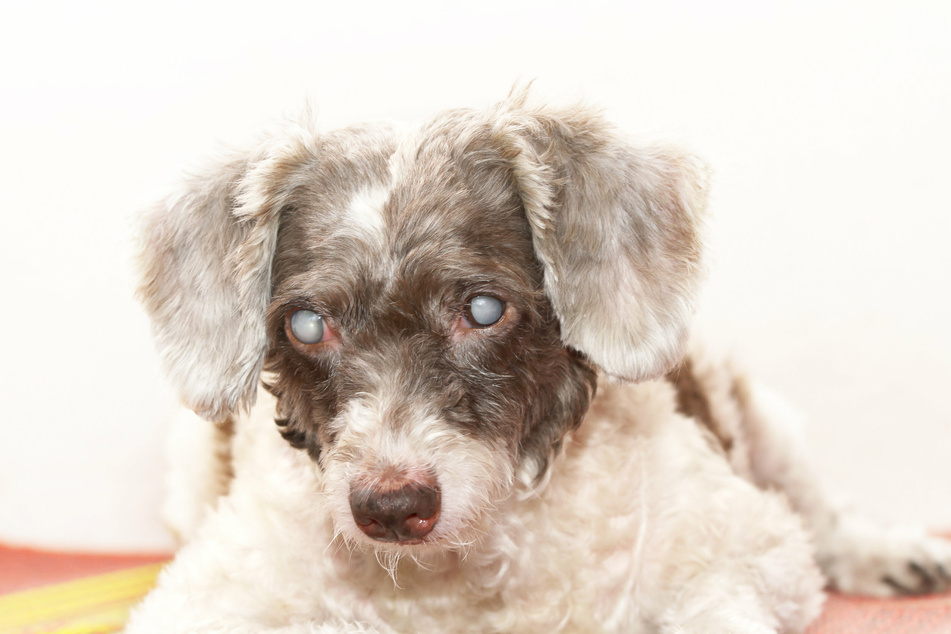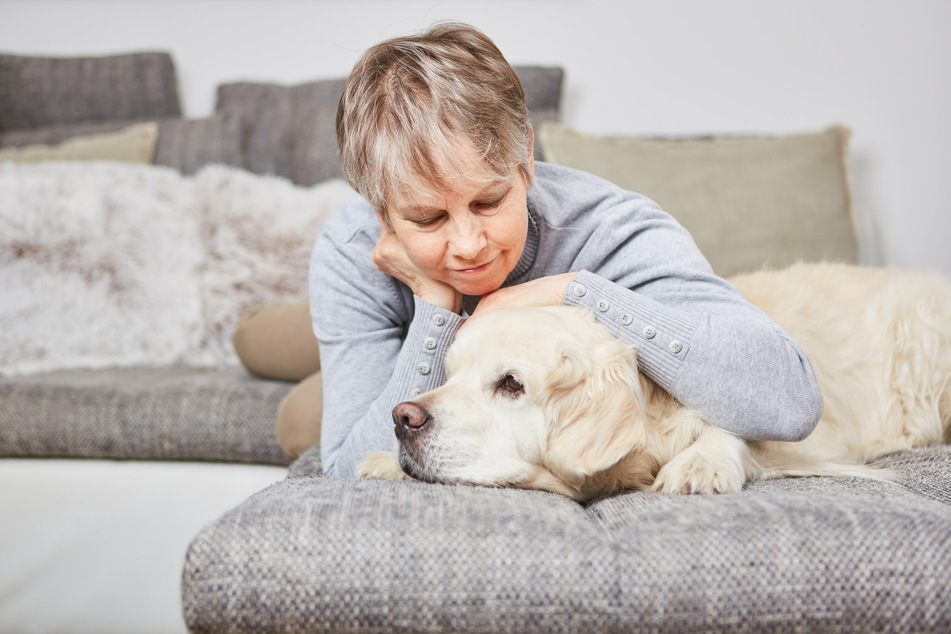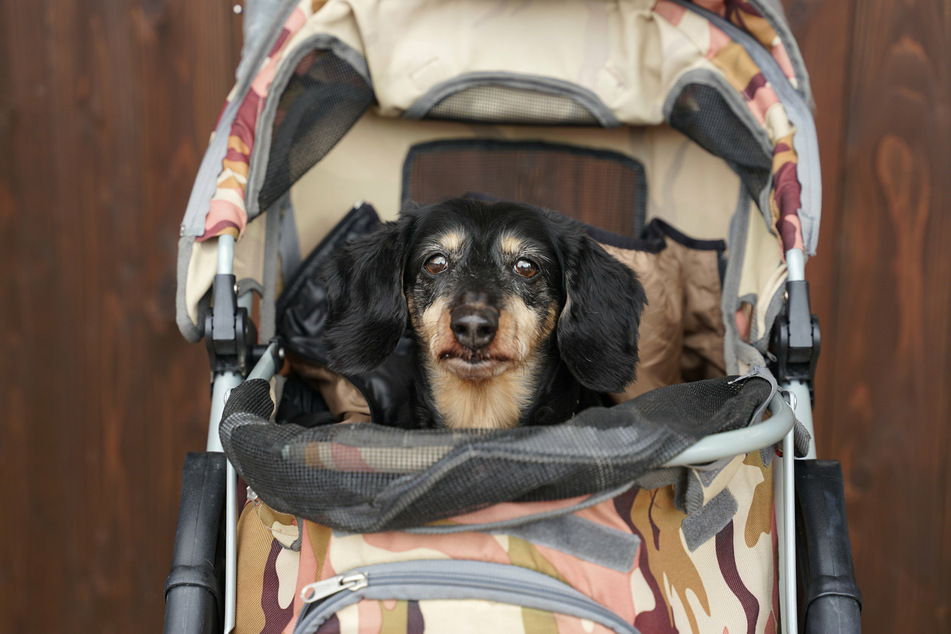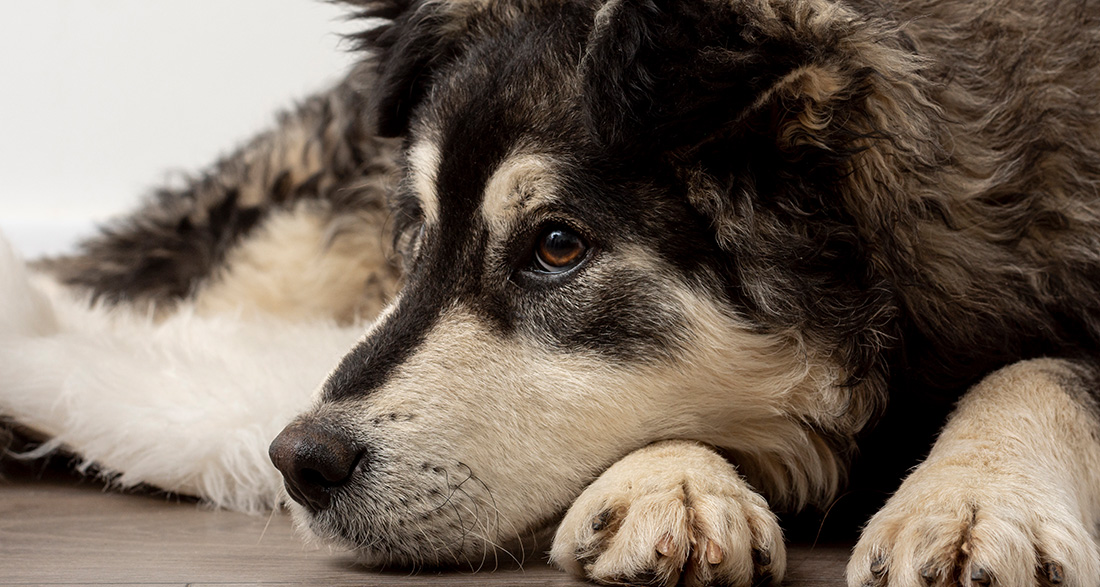Dogs age just like humans – and even faster. The lively and exuberant four-legged friend eventually becomes a senior dog who takes things a bit more slowly.
The life expectancy of dogs averages between ten and fifteen years, varying depending on the breed, size, and living conditions. Smaller dogs generally live longer than their larger counterparts.
The aging process in dogs varies in speed depending on the breed, size, and weight. While small breeds like Dachshunds are considered seniors around ten years old, this designation occurs around eight years for medium-sized dogs like Border Collies and even as early as six to seven years for large dogs like Great Danes.
Regardless of the dog’s age, it’s essential to determine whether the altered behavior is due to natural developmental and aging processes or an underlying illness.
The dog guide provides information on the best ways to handle your senior dog and what specific considerations to keep in mind.
Senior Dogs: How Dogs Age

Similar to humans, dogs also age. They become frail, and their needs change. Apart from the actual age, several signs indicate that the four-legged companion is gradually becoming a senior.
- Both activity and energy levels decrease.
- Reduced movement, coupled with consistent feeding, can lead to weight gain.
- Alternatively, loss of appetite can result in weight loss.
- Senior dogs become more susceptible to illnesses. Conditions such as dental and joint problems, heart, and kidney diseases increase with age.
- The sensory organs weaken. This means the dog may have poorer vision, sense of smell, hearing, and taste.
- Bladder muscle strength decreases, leading to more frequent instances of incontinence.
- Many senior dogs require more rest and have an increased need for sleep.
- Similar to humans, a dog’s fur changes color with age. The first gray hairs typically appear around the muzzle.
- Senior dogs may appear more confused or disoriented; they, too, can experience dementia.
Tip
If you notice such changes or others in your dog, a visit to the veterinarian is recommended. Serious illnesses may be behind these symptoms.
Senior Dogs: Tips for Proper Handling

Every dog ages differently, with unique needs that should be respected and accommodated in daily routines.
- Nutrition:
Senior dogs have different dietary requirements than their younger counterparts. The energy demand decreases due to reduced activity, but vitamins, minerals, and easily digestible proteins become crucial to strengthen the immune system. Specialized senior dog food is suitable for aging dogs.
- Exercise:
While exercise is beneficial for elderly dogs, walks and outings should not be eliminated entirely. Depending on the dog’s mood and health, it may be helpful to take longer breaks or shorten walks but increase their frequency. This is especially beneficial for senior dogs with bladder issues.
- Mental Stimulation:
Not only physical fitness but also mental fitness can be fostered in aging dogs through small mental challenges and search tasks.
- Daily Routines:
For older dogs, it’s advisable not to overwhelm them with sudden changes. It’s better to introduce new situations slowly and gently.
- Care:
Senior dogs also deserve loving care and attention. Regularly check their eyes, ears, and teeth. If the dog moves less, it may be necessary to trim its claws. Overall, it’s essential to take time for your pet and provide the closeness it currently needs.
- Provide Security:
With weakening senses, dogs may feel increasingly insecure during walks. In such cases, the owner should take charge and act appropriately, such as avoiding obstacles in time. To signal other dog owners that your pet needs distance and tranquility, you can attach a yellow ribbon to the dog leash as a symbol.
- Avoid Trip Hazards:
To prevent collisions and potential injuries, objects like shoes or boxes should not be carelessly left in the room.
- Veterinarian Visits:
Finally, regular check-ups with the veterinarian are crucial. In addition to routine examinations, the vet can perform specific age-related screenings. This helps identify and, if necessary, treat painful joint diseases, heart issues, or thyroid problems early on.
Special Aids for Older Dogs

In addition to age-appropriate handling, there are also special aids that can make life with an older dog more comfortable. Both veterinarians and pet stores can provide comprehensive advice.
- Pet Gates:
Dogs with joint problems should avoid stairs. Special pet gates can be installed in stairwells to protect the dog from falls.
- Dog Ramp:
If a dog frequently travels in a car, the quick jump into the trunk or back seat may be associated with pain or physical strain. To make this easier for the dog, there are so-called dog ramps.
- Carrier Bag:
If the pet can no longer walk but still wants to participate in activities and get fresh air, special carrier bags or backpacks are suitable.
- Cold Protection:
When the immune system no longer functions correctly, dogs can feel the cold. In such cases, functional dog clothing protecting against cold and wetness becomes essential, especially in winter.
- Dog Diaper:
With advancing age, a dog’s bladder muscles may weaken, leading to incontinence. To provide the dog with a sense of security and protect the home from excessive urine puddles, a diaper can be used for senior dogs.
Conclusion: Life Should Be Adapted to the Needs of Older Dogs
Dogs should be allowed to age with dignity.
Therefore, it is advisable to adjust the environment, daily routines, and handling to the specific needs of the dog. This way, the four-legged companion can enjoy a long and fulfilling life.


